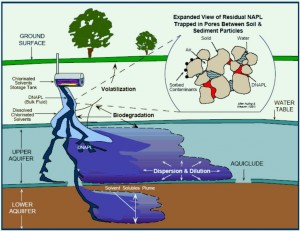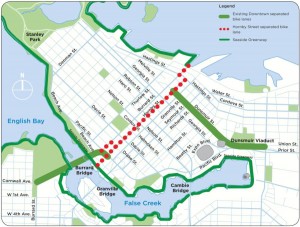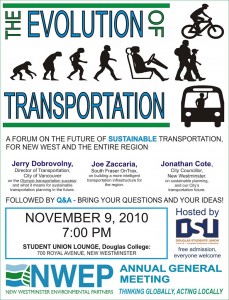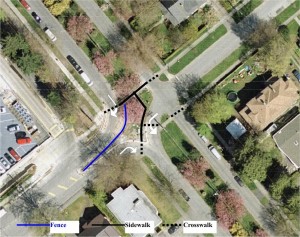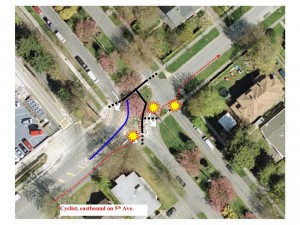The single biggest environmental issue in New Westminster today is not the “Toxic Blob” in the waterfront park. It is not the pending garbage incinerator. It is the United Boulevard Extension.
TransLink has cooked up a plan, using Federal stimulus money (your income tax), TransLink funding (your property tax + provincial tax), and …uh…some other mystery source… to more than double the number of trucks and cars that will enter the City from the east, with no plan to manage the traffic once it gets to the City.
And to make it more palatable, they are doing a Dr. Moreau melding of the project to the NeverGreen Line. And the whole thing is so fast-tracked, that the residents they plan to kick out of house and home were not even part of the consultation process.
This issue is covered excellently over on the Tenth to The Fraser Blog, and I think Matt Laird hits all the talking points really well over there.
The way I see it, New Westminster is a City with an enviable “sustainable mode share” (use of walking, bicycles and transit as opposed to private motor vehicles), but is still suffering from a significant traffic congestion problem. This is caused by a huge thru-traffic load. This is only going to get worse as the Port Mann becomes a toll bridge, and people divert to the Pattullo, and may become orders of magnitude worse if an increased-capacity Pattullo and the UBE come to town, bringing more cars and trucks to New Westminster’s residential streets, with no plans to move the increased traffic efficiently or safely through our streets.
All of the TransLink news of late has been about a “Funding Gap”. Major regional transportation projects like the Evergreen Line remain underfunded more than 10 years after they are announced, while our (soon to be former) Premier talks about trains to UBC and trains to Langley, with no plan to fund these initiatives. Meanwhile they are sneaking through a $150 Million highway project by tying it to the Evergreen, and pretending that it somehow “reduces greenhouse gasses” or “provides for non-SOV options” .
I can’t think of a more elegant way to say this: Bullshit.
The UBE does nothing to meet TransLink’s “6 Broad Goals” as set out in their Transport 2040 Strategy Document. It does not serve New Westminster in any way, and it takes money away from more valid projects that serve other part of the Lower Mainland better. Let’s kill this thing before it goes so far that it can’t be stopped.
Show up on Thursday at the meeting at the Justice Institute, not to protest, but to learn. The meeting will be run by TransLink staff, people who do not make the political decisions I am railing against, but are paid to bring plans to the public and answer questions best they can. Screaming, pulling of hair, calling of names will not be productive, these are not the people you need to convince that this plan does not work for you or your community.
Instead, one you know the plan, talk to your Mayor, and to your Councillors. In the end, they are the ones who are going to say “Yea” or Nay” to this project, and they are the ones you will be going into a polling booth in November 2011 to vote for.

